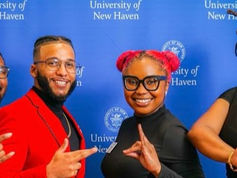Reel Injun: On the Trail of the Hollywood Indian – Analysis
- Elisa Broche

- Apr 25
- 3 min read
Neil Diamond sets out on a journey across the U.S. to look at how Hollywood has portrayed Native Americans in movies. He talks with historians, actors, and indigenous people to understand how these portrayals have shaped public opinion.
One key location he visits is Monument Valley, a site famously used in numerous Western films directed by John Ford. Here, Diamond reflects on how the landscape became synonymous with the "Hollywood Indian" stereotype, even though many Native American tribes depicted in these films were not from that region. The vast desert and towering rock formations served as a backdrop for countless cowboy-versus-Indian conflicts, reinforcing inaccurate and monolithic representations of Native people.
Diamond also travels to Los Angeles, the heart of the film industry, where he interviews Native actors such as Adam Beach and Wes Studi. He learns more about how this actor struggled to separate from Native Americans, being classified as either savages or warriors. In this conversation, he learns more about Native American representation in Hollywood. One of the most striking moments for me was seeing Sacheen Littlefeather stand and give a speech at the Oscars, hearing both cheers and boos from the audience. It was genuinely astonishing to witness, and I deeply admired, her bravery in taking such a bold stand for Native American rights on such a grand stage.
One of the places that called my attention the most was a camp of those "frat-looking boys" who painted their bodies, yelled, and kicked tables. To me, it is unclear what the purpose is for their actions. It was disrespectful. The scene highlighted the still ongoing issue of cultural appropriation and the difference in appreciation between indigenous traditions and how they are misrepresented or misused by non-Native groups.
Throughout the documentary, several key takeaways emerge regarding the portrayal of Native American people in movies. The concept of the "noble savage" and the "savage warrior" has dominated Hollywood narratives. Characters like Tonto, played by Jay Silverheels in The Lone Ranger, show the subservient sidekick trope, while other films present Native people as violent obstacles to white settlers. These reductive stereotypes erase the diversity of Native cultures and histories. Many non-Native actors have portrayed Indigenous characters, a practice known as "redface." An example is Burt Lancaster in Apache (1954), where he played the Apache warrior Massai despite having no Native ancestry. Similarly, white actors like Charles Bronson and Anthony Quinn were frequently cast in Native roles, further marginalizing Indigenous actors. The documentary also highlights how Native Americans were rarely given speaking roles, and when they did speak, their dialogue was often simplified or broken English. Films like Stagecoach (1939) and The Searchers (1956) showcased Native characters as either silent or speaking only in grunts and fragmented phrases, reinforcing a dehumanizing portrayal.
The documentary also discusses the "renaissance" of Native cinema, which represents a turning point in the industry where Indigenous filmmakers and actors reclaimed their stories. This movement focuses on authentic storytelling from Native perspectives rather than narratives shaped by outsiders. Films such as Smoke Signals (1998), directed by Chris Eyre and based on Sherman Alexie's work, mark a significant shift in Native representation. The film, featuring Adam Beach and Evan Adams, was the first feature-length film written, directed, and acted entirely by Native Americans, breaking new ground for indigenous storytelling.
In the end, Reel Injun shows how Hollywood has often misrepresented Native Americans but also highlights the changes happening in Native cinema. Through interviews, history, and personal stories, the documentary explores the struggles and progress of Indigenous representation in film. More Native filmmakers and actors are now telling their own stories in a way that feels real and meaningful.














Comments